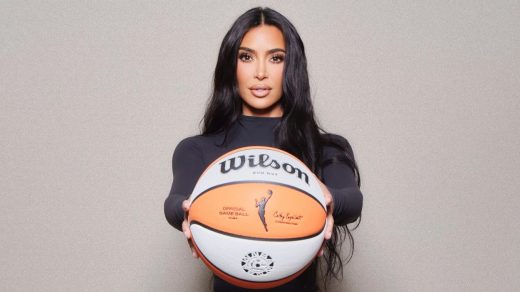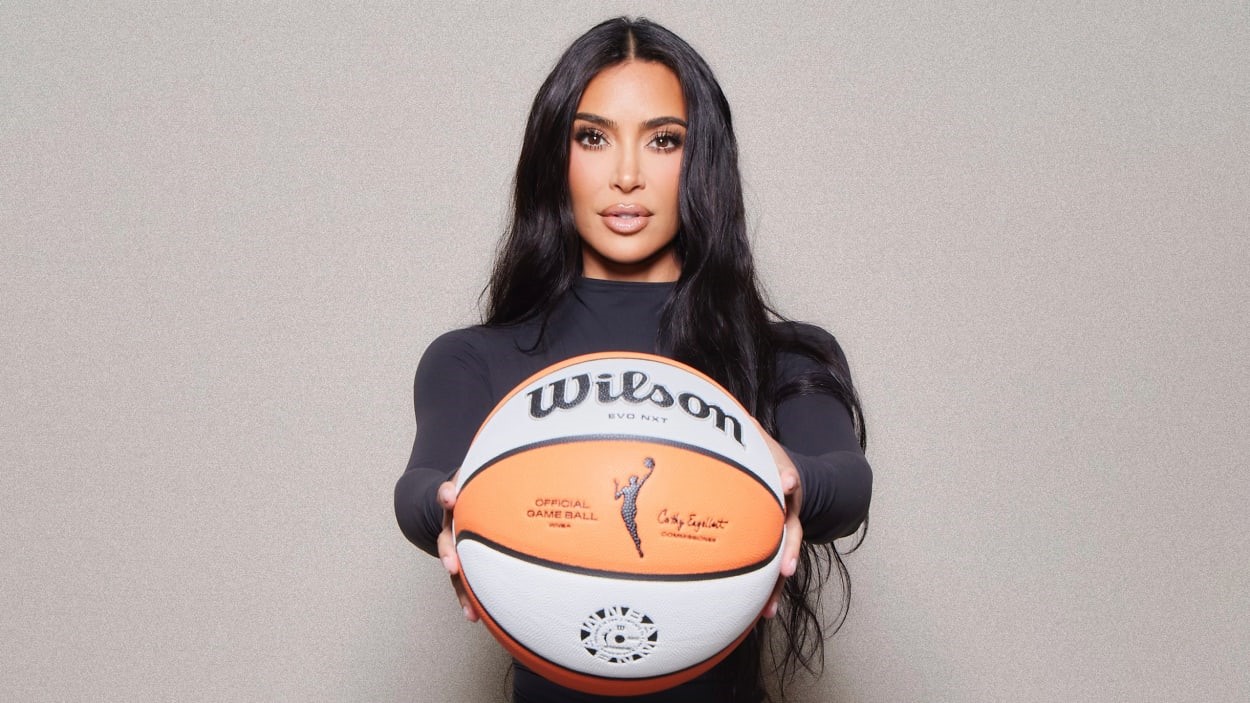Inside Skims’ big week: from an NBA partnership to a nipple bra
By Yasmin Gagne
Influencer and entrepreneur Kim Kardashian is a frequent presence on the sidelines of Lakers games, often sitting courtside with members of her family. But on October 26, she finally made it onto the court—or at least, the logo for her shapewear company, Skims, did, as part of a new sponsorship deal between the brand and the league.
“To see Skims on the court during the 4th quarter of a Lakers game was such a special moment,” Kardashian told Fast Company in an email interview.
On Monday, the brand announced that it is the official underwear partner of the NBA, WNBA, and U.S.A. Basketball. The move makes clear that the four-year-old company, which is valued at $4 billion, is making a play to attract athletes and sports fans. It’s a strategy that Skims CEO Jens Grede has been plotting for some time.
“Kim Kardashian is the Michael Jordan of the influencer generation,” Grede said in a recent episode of Fast Company’s Most Innovative Companies podcast. A couple of decades ago, he said, about a fifth of American teens wanted to be a professional athlete. “Today, 20% of American teenagers want to be a creator”—and Kardashian, who cofounded the shapewear brand, has been “a huge part of shaping that culture.”
At the time of the interview, Grede drew the comparison between Kardashian and the legendary baller while professing his admiration for the way the Air Jordan brand transcended the basketball court to become a fashion and streetwear staple. Grede is now moving Skims in the opposite direction: from fashion to court.
The NBA partnership is timed to boost the company’s recent menswear launch. In October, Skims dropped its first line of boxers, briefs, and mens T-shirts, accompanied by a high-profile campaign starring NBA player Shai Gilgeous-Alexander, Brazilian soccer star Neymar, and NFL player Nick Bosa. (NBA Commissioner Adam Silver told a reporter from TMZ last week that he, too, wears Skims underwear, making headlines.) It’s not the first time that Skims has worked with athletes. In 2021, the company provided the official underwear, loungewear, and pajamas for women competing for Team USA at the Tokyo Olympics, with WNBA star A’ja Wilson serving as a model for the collection.
Financial terms of the partnership have not been disclosed, but the deal puts Skims in elite ranks. NBA sponsors include the household brands Gatorade, State Farm, and Google, and global apparel companies Nike and Adidas. Skims’ partnership indicates the brand’s desire to join their ranks as a ubiquitous name.
“Basketball, more than any other sport, has a connection to fashion,” Grede said in an interview with Fast Company after the sponsorship deal was announced. He referenced the popular League Fits Instagram account, which showcases the often wacky designer outfits worn by NBA players: “The tunnel to the locker room has become a runway for players.” Skims would like to be on that runway. In addition, international broadcasts and appeal of basketball abroad can help spread awareness of the brand to new markets.
Few details of the partnership have been unveiled, but Grede said that it offers Skims opportunities for brand integrations across different events. The company can work directly with teams and players, and take advantage of media placement opportunities on channels like ABC and ESPN. The Skims logo will now be seen on national broadcast networks. “We also will engage across league media and host activations for players and fans at key events including the In-Season Tournament and All-Star weekend,” said Kardashian.
Notably, the company is sponsoring both the NBA and WNBA. “Working with the WNBA is equally important,” Grede said. “Its fan base has increased over the last few years. That league is also part of the cultural conversation.” Even so, some WNBA watchers have criticized Skims for not moving to work directly with the leagues until after the brand’s men’s line launched. They see that as a sign that Skims is more interested in the men’s league and its players, despite having received early support from a WNBA star like Wilson.
And then there’s the thorny issue of Kardashian herself, who has a history of promoting ever-changing unrealistic body standards and mild cultural appropriation to her followers. (Skims’ shapewear and underwear is made for a broad range of body types and skin colors, sending a more inclusive message to customers.) How Skims sponsorship will be received by the fans of a league that’s a model of women’s empowerment remains to be seen.
Last week, Skims also launched a push-up bra with built-in nipples. Kardashian starred in an accompanying video that playfully introduced the idea that such a bra—with artificially perky nipples—is exactly what women need to look cold in an era of rising temperatures.
Though the company announced that it would donate 10% of the proceeds from the garment (which is already sold out in every color) to environmental organization 1 Percent for The Planet, critics denounced the move as a publicity stunt wrapped in greenwashing.
The underwear and ad campaign demonstrate the central paradox of the Skims brand. Looked at one way, the bra may seem empowering, as some breast cancer survivors have pointed out. From a different vantage point, it seems like a product designed to reinforce unrealistic beauty standards for consumers.
At any rate, the stunt worked. “We can’t take ourselves too seriously. We have an innovative product that some people feel will lift their confidence. We had to approach it with humor,” Grede said. He added that the brand—like the Kardashians themselves—isn’t afraid to court some controversy to attract attention. “I didn’t know how much attention it was going to get, but when I saw the first cut of the video, I thought, ‘This is gonna go places.’”
(18)



